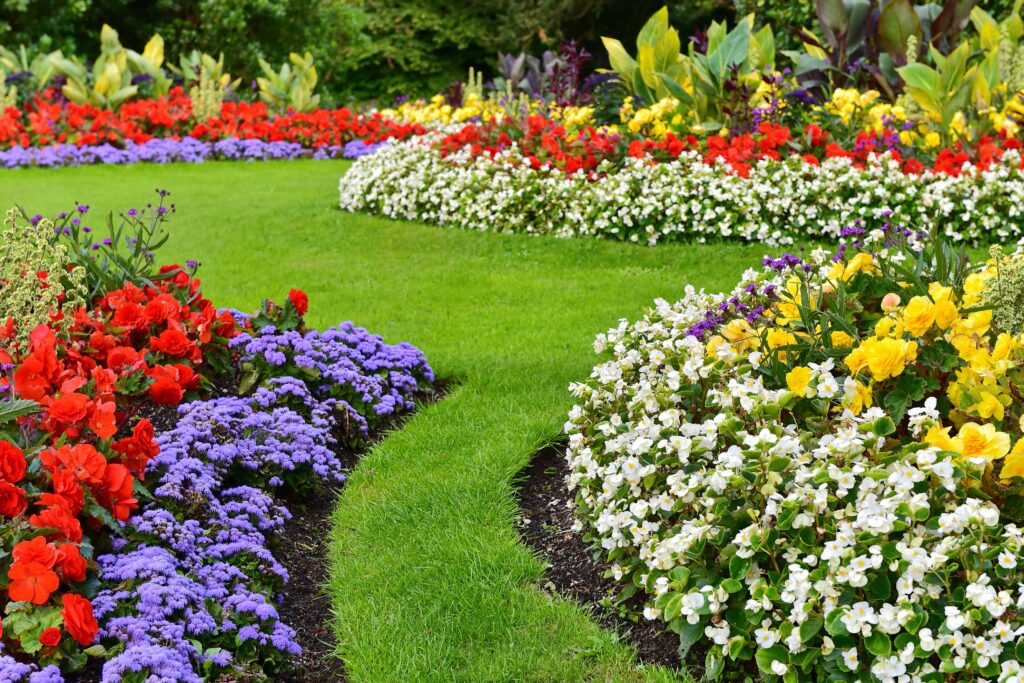Preparing Your Lawn and Garden for Spring

Spring is just around the corner, and that means it’s time to give your lawn and garden the attention they deserve. After months of cold weather, your outdoor space could use a little refresh to shake off winter’s effects. A bit of early prep now will go a long way in ensuring a lush, healthy lawn and vibrant garden all season long.
By getting a head start, you’ll not only encourage stronger plant growth but also prevent common issues like patchy grass, weeds, and poor soil health. Plus, tackling these tasks early means you can sit back and enjoy a beautiful yard once the warmer days arrive.
Whether it’s cleaning up debris, prepping your soil, or planning out new plantings, a little effort now will set you up for success this Spring.
Table of Contents
Cleaning Up After Winter
Winter can leave behind quite a mess, so the first step to getting your lawn and garden spring-ready is a good cleanup. Snow, ice, and cold temperatures take a toll on your yard, and before you start planting or fertilizing, you’ll want to clear out anything that’s been left behind.
Tackle Debris
Keep an eye out for fallen branches, leaves, and any leftover mulch or plant material from last season. A thorough raking will not only make your yard look tidier but also help loosen up compacted soil and improve airflow to your grass.
Check for Winter Damage
Take a walk around your yard and inspect your plants, lawn, and hardscaping. Look for signs of frost damage on shrubs and perennials, and trim away any dead or damaged growth to encourage new, healthy sprouts. If your lawn has bare spots or appears matted down from snow mold, give it a gentle rake to help it breathe.
Don’t forget to check your hardscaping, too! Freezing temperatures can cause cracks in patios, walkways, and retaining walls. If you spot any issues, addressing them now will prevent bigger problems down the road.
A little cleanup goes a long way in prepping your lawn and garden for the growing season. Once everything is cleared out and refreshed, you’ll have the perfect foundation to start bringing your outdoor space back to life!
Soil Preparation and Testing
Before you start planting, it’s important to make sure your soil is in top shape. Think of soil as the foundation of your garden—if it’s lacking nutrients or has the wrong pH balance, your plants won’t thrive no matter how much water or sunlight they get.
Why Test Your Soil?
Soil testing helps you understand what’s going on beneath the surface. It tells you the nutrient levels, pH balance, and overall health of your soil. If your plants struggled last year, chances are your soil needs a little boost.
You can grab an at-home soil test kit from a garden center or send a sample to a local extension service for a more detailed analysis.
How to Improve Your Soil
Once you know what your soil needs, it’s time to give it some care. Here are a few ways:
- Compost: Compost enriches the soil with organic matter, improves drainage, and boosts microbial activity. Spread a layer over your garden beds and mix it in to give your plants a nutrient-packed start.
- Fertilizer: If your soil test shows a lack of key nutrients like nitrogen, phosphorus, or potassium, a balanced fertilizer can help. Choose one based on your soil’s needs—organic options like bone meal or fish emulsion are great natural choices.
- Lime or Sulfur: If your soil is too acidic (low pH), adding lime can help balance it out. On the flip side, if it’s too alkaline (high pH), sulfur can help bring it back to the right level for optimal plant growth.
Lawn Care Essentials
After a long winter, your grass needs some help to bounce back strong and healthy. By focusing on a few key lawn care tasks, you can set yourself up for a thick, vibrant yard.
Aeration and Dethatching
Over time, your lawn can become compacted, making it tough for water, air, and nutrients to reach the roots. That’s where aeration comes in. Aerating your lawn—either with a manual tool or a machine—creates small holes in the soil, allowing it to breathe and absorb nutrients more effectively. This is especially important if your yard sees a lot of foot traffic or if water tends to pool in certain areas.
Along with aeration, dethatching helps give your lawn a fresh start. Thatch is the layer of dead grass, roots, and debris that builds up between the soil and the healthy grass. A little thatch is fine, but too much can block water and nutrients from reaching the roots. Using a dethatching rake or power dethatcher in early spring helps break up this layer, making way for new growth.
Overseeding and Fertilizing
If your lawn has thin patches or bare spots, overseeding is the key to filling them in. Spreading new grass seed over your existing lawn helps thicken it up and crowd out weeds before they have a chance to take over. Choose a grass seed mix that matches your climate and sun exposure, and pair it with a good starter fertilizer to give those new seedlings a strong start.
Proper Spring Watering Techniques
Spring is all about balance when it comes to watering. Your lawn is coming out of dormancy, so it needs consistent moisture, but too much water can lead to shallow roots and fungus problems. Aim for about 1 to 1.5 inches of water per week, including rainfall. Watering deeply and less frequently is better than a light sprinkle every day—it encourages deep root growth, making your grass more drought-resistant.
Preparing Flower Beds and Gardens
Whether you’re sprucing up your landscape or planning a garden full of fresh produce, here are some key steps to get started.
Cutting Back Perennials and Pruning Shrubs
Before new growth really kicks in, it’s important to clean up your existing plants. Perennials, like daylilies and hostas, should be cut back to remove any dead or damaged stems from the previous year. This allows fresh growth to take center stage and helps prevent disease from lingering in old foliage.
For shrubs, early spring is a great time for pruning—especially for those that bloom later in the season, like hydrangeas and butterfly bushes. Trim away dead or weak branches to encourage healthy growth and improve air circulation. But if you have spring-blooming shrubs (like lilacs or azaleas), hold off on heavy pruning until after they flower to avoid cutting off this year’s blooms.
Adding Fresh Mulch to Retain Moisture and Suppress Weeds
A fresh layer of mulch not only gives your flower beds a clean, polished look, but it also helps retain moisture, regulate soil temperature, and keep weeds at bay.
Apply about 2 to 3 inches of mulch around your plants, being careful not to pile it directly against stems or tree trunks (this can trap moisture and lead to rot). Organic mulch, like shredded bark or compost, will gradually break down over time, improving your soil’s health.
Choosing and Planting Early-Season Flowers and Vegetables
Spring is the perfect time to start filling your garden with cool-season flowers and veggies that can handle chilly nights and unpredictable weather.
For flowers, consider planting pansies, violas, snapdragons, and primroses—these tough blooms can tolerate a little frost and will add instant color to your beds. If you’re planning ahead, early spring is also a great time to plant summer-blooming bulbs like lilies, dahlias, and gladiolus.
For vegetables, go for hardy crops that thrive in cool temperatures, such as lettuce, spinach, kale, peas, carrots, and radishes. If you’re starting from seeds, be sure to check your local frost dates and plant accordingly.
Pest and Weed Control
As temperatures rise, these unwelcome visitors start making themselves at home in your yard..
Identifying Common Spring Pests and How to Deter Them
Springtime brings new growth, but it also brings pests eager to snack on your plants. Some of the most common garden troublemakers include:
- Aphids – These tiny insects suck the sap from plants, causing curled leaves and stunted growth. A strong spray of water or introducing natural predators like ladybugs can help keep them in check.
- Slugs and Snails – These slimy pests love munching on tender leaves. Try using crushed eggshells or diatomaceous earth around your plants to deter them naturally.
- Cutworms – These caterpillars chew through young seedlings at the base. Place a collar made of cardboard or plastic around the stems of new plants for protection.
- Ants – While ants themselves don’t harm plants, they farm aphids for their honeydew. Sprinkling cinnamon or coffee grounds around your garden can help keep them away.
For a natural pest defense, consider companion planting—certain plants, like marigolds, garlic, and basil, naturally repel insects and can help protect your garden without the need for chemicals.
Pre-Emergent vs. Post-Emergent Weed Control Methods
Weeds are the ultimate garden invaders, stealing nutrients, water, and sunlight from your plants.
- Pre-emergent weed control – This stops weeds before they even sprout. Pre-emergent herbicides or natural alternatives like corn gluten meal work by preventing seeds from germinating. Apply these early in the season before weeds start popping up.
- Post-emergent weed control – If weeds have already taken hold, it’s time to get rid of them. Hand-pulling is a great option (especially when the soil is damp), but for tougher weeds, a targeted organic or selective herbicide can help without harming surrounding plants.
A thick layer of mulch also works wonders for suppressing weeds while keeping moisture in the soil.
Setting Up Irrigation and Drainage
Spring is the perfect time to check your irrigation system and drainage to ensure everything is working properly before the heat of summer kicks in.
Checking and Repairing Sprinkler Systems
If you use sprinklers or a drip irrigation system, do a quick spring tune-up to avoid surprises later. Here’s what to check:
- Leaks and broken heads – Turn on the system and look for any misaligned or clogged sprinkler heads. Clean or replace as needed.
- Coverage areas – Adjust sprinkler heads to make sure all areas are getting even water distribution. You don’t want dry patches or unnecessary overspray on sidewalks.
- Water pressure – Too high or too low pressure can lead to inefficient watering. A pressure regulator or simple adjustments can help optimize flow.
If you rely on soaker hoses or manual watering, now’s a good time to check for cracks or blockages and set up a consistent watering schedule for the season.
Ensuring Proper Drainage to Prevent Standing Water
While water is great for your garden, standing water can quickly lead to root rot, fungal diseases, and even attract pests like mosquitoes. Here’s how to prevent drainage issues:
- Inspect low spots – If water tends to pool in certain areas, fill them in with soil or consider installing a French drain.
- Check gutters and downspouts – Ensure they direct water away from your garden beds instead of creating muddy patches.
- Use raised beds or aeration – If your soil stays too wet, raised garden beds or aerating your lawn can improve drainage and prevent root suffocation.
Conclusion
By taking a little time now to clean up after winter, prep your soil, refresh your flower beds, control weeds and pests, and fine-tune your irrigation, you’ll set the stage for a thriving outdoor space.
The sooner you tackle these tasks, the better your yard will look—and the less work you’ll have to do later.
Additional Home Improvement Resources
- Bathroom Flooring Trends
- The Ultimate Spring Cleaning Guide for Homeowners
- Inspecting Your Roof for Winter Damage

Anna has over six years of experience in the home services and journalism industries and serves as the Content Manager at MyHomePros.com, specializing in making complex home improvement topics like HVAC, roofing, and plumbing accessible to all. With a bachelor’s degree in journalism from Auburn University, she excels in crafting localized, comprehensive guides that cater to homeowners’ unique needs. Living on both coasts of the United States has equipped her with a distinctive perspective, fueling her passion for turning any house into a cherished home through informed, personalized decision-making.








